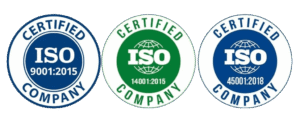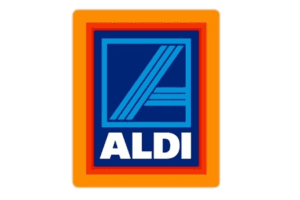Safety vest regulations — quick checklist to confirm your site is compliant and workers are safe
Safety vest regulations are simple in concept but easy to miss in practice. This checklist walks you through the legal and practical steps you should have in place today so high-visibility clothing actually protects people — not just fills a box on a compliance form. If you manage operations, warehousing, construction, traffic control or any site with moving vehicles/plant, run this checklist now.
What you offer + the benefit
We help businesses audit and supply compliant high-visibility garments and customised safety vests that meet workplace risk needs — reducing incidents, improving visibility and keeping you on the right side of WHS duties.
Short supporting promise (subheading)
A straight-to-the-point, legally informed checklist you can use on site now — plus a fast route to quotes and custom branding.
Request a Quote → https://carewellgroup.com.au/contact-us/
Checklist: Is your workplace compliant with safety vest regulations?
Start here — do you have a written risk assessment that requires high-visibility clothing where there are moving vehicles or plant? If yes, continue. If no, complete a risk assessment immediately (see Safe Work Australia guidance). Safe Work Australia
- Have you identified the precise risk that requires hi-vis clothing?
• Yes/No — Record whether the hazard is moving traffic, low light, night work, moving plant or temporary works. High-visibility clothing is part of PPE only after higher-order controls (elimination, substitution, isolation) are considered. SafeWork NSWSafe Work Australia - Are your vests compliant with the applicable Australian standard (AS/NZS 4602.1 and AS/NZS 1906.4 where relevant)?
• Yes/No — The primary Australian standard for high-visibility safety garments is AS/NZS 4602.1 (Garments for high-risk applications); check garment class (D, N, D/N) and fabric/tape compliance. If in doubt, request a test certificate from the supplier. Standards AustraliaTotal Uniform Solutions Blog - Does each vest match the work environment (day vs day/night vs night)?
• Yes/No — Class D is daytime, Class N is night, and Class D/N covers both. Using the wrong class (e.g., daytime only at night) is ineffective and non-compliant. Total Uniform Solutions BlogOHS Reps - Are garments the right size, fit and comfortable for the wearer?
• Yes/No — Employers (PCBU) must select PPE that fits, is comfortable, and is suitable for the task; fit issues decrease use and increase risk. Consult workers when selecting sizes and styles. Safe Work Australia - Do you have documentation proving compliance (invoices, test certificates, declaration of conformity)?
• Yes/No — Keep supplier test certificates or evidence the garment meets the standard (or equivalent). If the garment is branded/custom, ask the supplier for proof of compliance before purchase. Standards Australia - Is reflective tape correctly positioned and continuous where required?
• Yes/No — Standards specify reflective tape layout and minimum visible fluorescent area. Inspect garments for correct encirclement of the torso and adequate tape width. Total Uniform Solutions Blog - Are items inspected, cleaned and replaced on a defined schedule?
• Yes/No — Stained, damaged or faded hi-vis material may not meet performance. Implement regular inspection, cleaning and replacement policies and log checks. SafeWork SAWorkSafe ACT - Do you provide training and enforce correct use?
• Yes/No — Workers must be trained in why hi-vis is used, when to wear it, how to wear it correctly and what to report (damage, poor fit). Records of training are part of your compliance evidence. Safe Work Australia - Are contractors, visitors and labour-hire workers provided suitable PPE free of charge?
• Yes/No — PCBUs must provide suitable PPE where required and must not charge workers for required PPE. Ensure subcontractors meet the same standard. SafeWork NSW+1 - Have you considered comfort & UV protection for outdoors work?
• Yes/No — For outdoor roles include UPF and breathability in selection; AS/NZS guidance and UPF standards help reduce long-term sun risk. Total Uniform Solutions Blog - Is hi-vis part of your incident investigation and toolbox talks?
• Yes/No — If a near miss involves low visibility, include clothing suitability in the investigation and update controls accordingly. - Do you have a long-term replacement budget and supplier QA?
• Yes/No — Plan for replacement intervals, batch testing and supplier audits. For high volumes, consider customised, certified vests via our custom safety vest service: https://carewellgroup.com.au/custom-safety-vests/.
What failing a check means (short, practical)
If you answered “No” to any of the above items you have a compliance gap that increases risk and potential regulatory exposure. Start with the highest-risk failures (wrong class for night work, no risk assessment, no training) and schedule corrective actions.
Practical evidence you should keep on file (quick list)
• Risk assessment that specifies the need for hi-vis. Safe Work Australia
• Supplier compliance certificates for AS/NZS standards. Standards Australia
• Training records and toolbox talk sign-offs. Safe Work Australia
• Inspection and replacement log for garments. SafeWork SA
External resources & further reading (dofollow)
• Safe Work Australia — Personal protective equipment (PPE) overview and WHS duties. Safe Work Australia
• Standards Australia — AS/NZS 4602.1 high-visibility safety garments (purchase/summary page). Standards Australia
• Practical supplier guidance on garment classes and tape placement. Total Uniform Solutions Blog
• Carrier/industry reference for hi-vis rules and calculators: https://share.google/lgtCmZysrDNTmlqtf (external resource you can link from your policy pages)
Internal links you can add right away
• Custom Safety Vests — https://carewellgroup.com.au/custom-safety-vests/
• Safety Vests category — https://carewellgroup.com.au/category/safety-vests/
• Contact / Request a Quote — https://carewellgroup.com.au/contact-us/
Smart Tip
If you’re unsure whether a garment meets AS/NZS 4602.1, ask the supplier for the test certificate and match it to the required garment class before you buy. Buying by colour alone is risky.
Next steps (one practical action)
Run a 15-minute floor check: pick three workers in different roles, inspect their hi-vis for class, tape placement, fit and condition, and record the result. If any fail, start corrective action and request a compliance audit or custom quote: Request a Quote → https://carewellgroup.com.au/contact-us/.
Location & contact (place these visibly on the page)
Carewell Group Pty Ltd, Unit 27/191 McCredie Road, Smithfield, NSW 2164
Phone: +61 0477 123 699
Email: sales@carewellgroup.com.au | info@carewellgroup.com.au | logistics@carewellgroup.com.au










